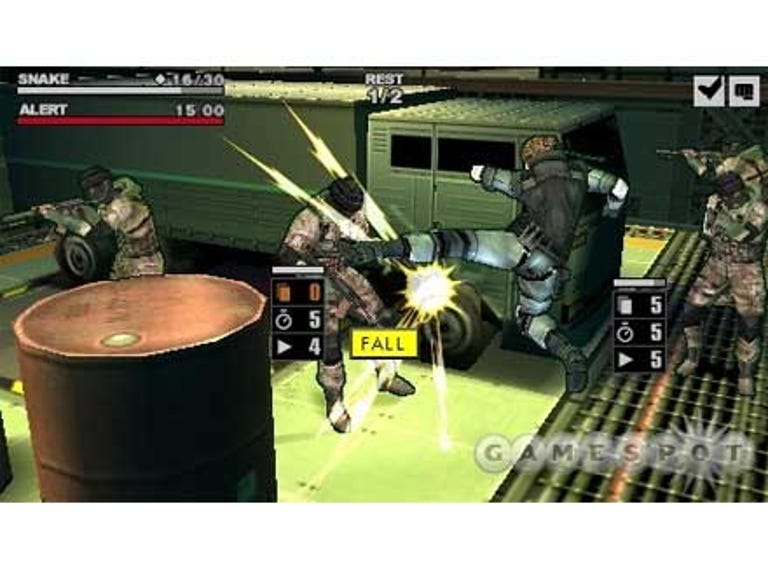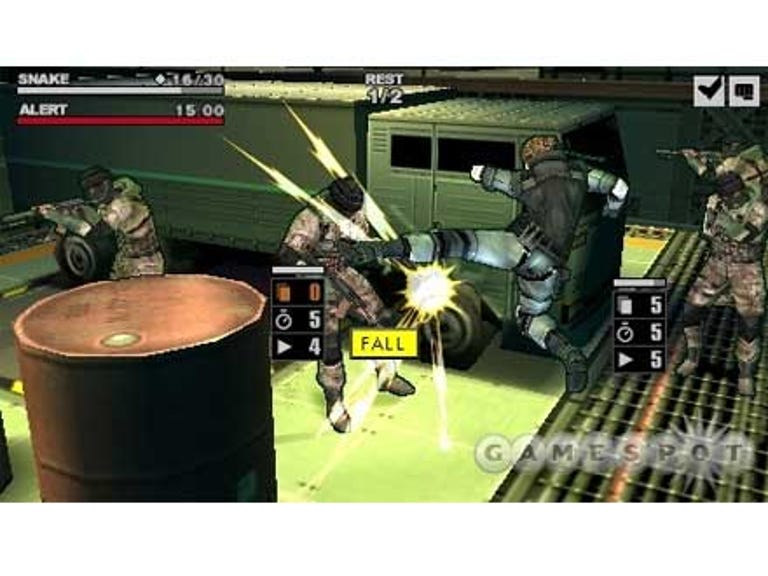 Why You Can Trust CNET
Why You Can Trust CNET Metal Gear Acid 2 review: Metal Gear Acid 2
While Metal Gear Acid 2's gameplay isn't fast, it's deep and offers enough appeal to keep you coming back for more.
Solid Snake is back. The gritty, tough soldier is called out of retirement to help wage a battle against a band of mercenaries intent on stealing a secret military project. They're holding an American politician hostage and it's up to you to save the day. It sounds like a fairly standard plotline for a Metal Gear game, but that's where the similarities between Acid and previous titles in the franchise end.
The Good
The Bad
The Bottom Line

The gameplay is presented with the familiar top-down layout offered by previous releases, but there's a major difference: As in the first Acid game, Metal Gear Acid 2 has abandoned the freeform style in favour of a turn-based mission format. The top-down map is divided up into invisible squares, and you painstakingly move one square at a time, which forces you to focus on strategy from the onset. The focus of the game remains the same, and stealth plays a significant role in allowing you to navigate through levels. You have to pay special attention to tactics in order to get past some of the more difficult sections of the game, which gets quite difficult quickly.
One unique twist is the inclusion of game cards that control the combat and actions in the game. At the start of each mission, you build a deck of cards out of a store. Hands are drawn from the deck, and the cards present in a hand will determine which actions you can take at any given time. As the game relies on a turn-based structure, the cards are drawn at each turn. The cards are divided up into a few key groups: equipment, movements, and 'use'. The equip cards are designed to allow the player to fill a set number of slots with objects to use during play. For example, you can fill a slot with a gun and be able to launch counterattack during your opponent's turn. Movement cards are straightforward: they enable Snake to move from one grid square to another during a mission. Use cards are also simple in concept: they allow you to utilise a particular weapon to attack an enemy.
Not all actions take the same amount of time, though. Each card has a 'cost' ascribed to it that represents how much time it takes before you can make another move. The cards are random - though you do get to choose the master deck - and force you to adapt tactics on the fly, as you can't rely on a particular card coming up at any given point in the game. It's a clever way to add another element of complexity to the game, but some of the execution is confusing.
For example, early in the storyline, you're told that you need ammo cards to fire weapons, but ammo cards don't exist in the game. The manual helps clear up the confusion, but it's a bit of a trap for anyone just wanting to play from the word go.
The gameplay is also quite hard. You find the first couple of missions function as tutorials and allow you to familiarise yourself with the format and controls, but it doesn't take long before you're attempting missions repeatedly just to get through. It does get a little bogged down at times, but the fact that you can be dealt different cards each time means that no mission is really the same twice.
Another excellent twist is the addition of a second character, Teliko, that you can control along with Snake in later missions. This allows you to set some clever and impressive traps, as you can use the pair to lure enemies into an ambush. Teliko plays a role in the outstanding multiplayer mode, too. Two players can take control of either Snake or Teliko in a large map, where they hunt for special discs to unlock missions. Three discs will unlock four missions, but only one of the missions will actually finish the level. Credits are awarded (or, more accurately, deducted from your opponent) for killing enemy characters, so players have several fronts to battle on.
Overall, the graphics are stunning, and the turn-based gameplay offers a unique twist on the familiar Metal Gear format. The multiplayer mode is engaging, and the entire title is absorbing. Though it doesn't take long before you begin to develop tactics and strategies, the gameplay gets difficult quickly, keeping you on your toes. I found myself taking several attempts to successfully clear some of the intermediate levels and have since returned to try my luck at the earlier levels. While the gameplay isn't fast, it's deep and offers enough appeal to keep you coming back for more.
